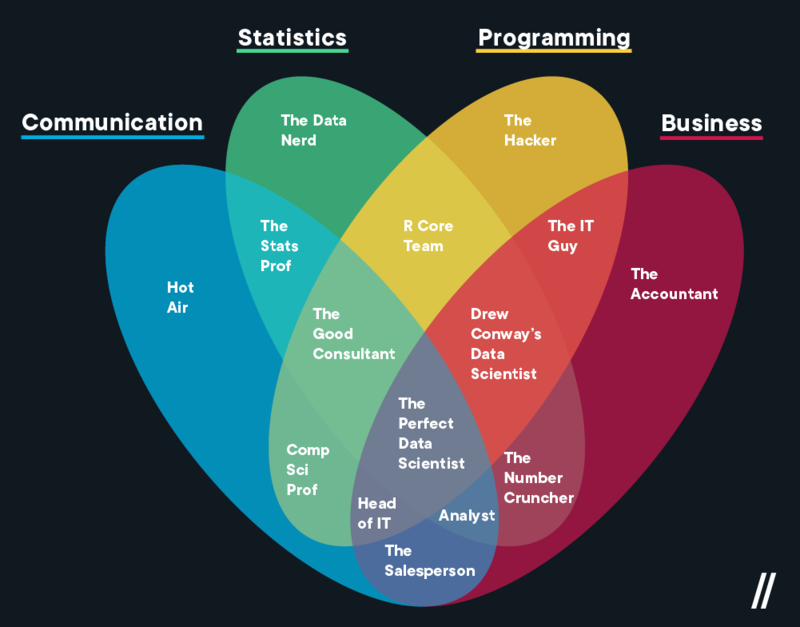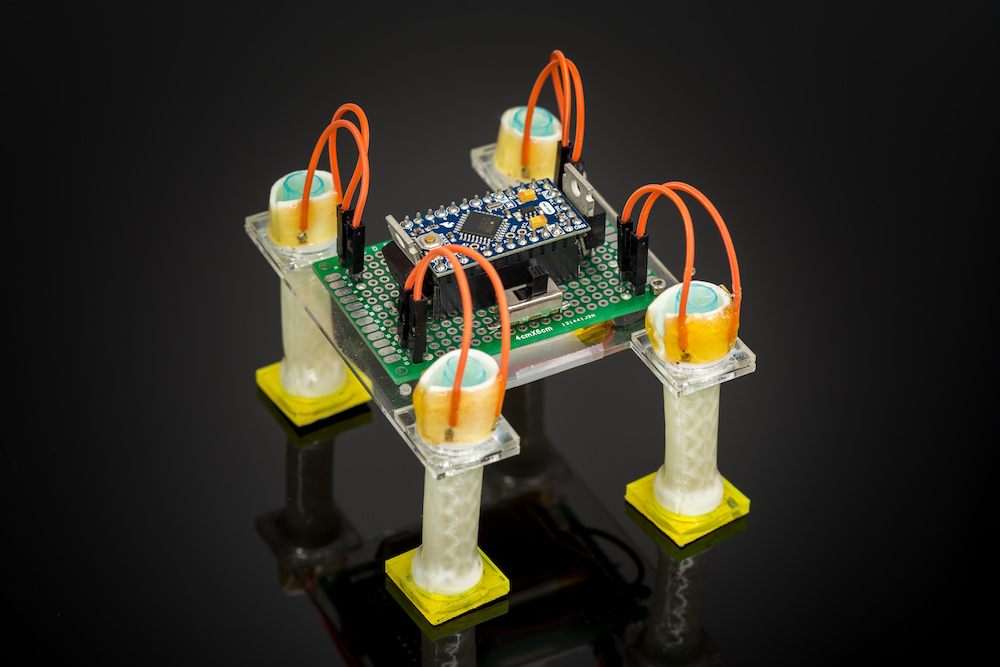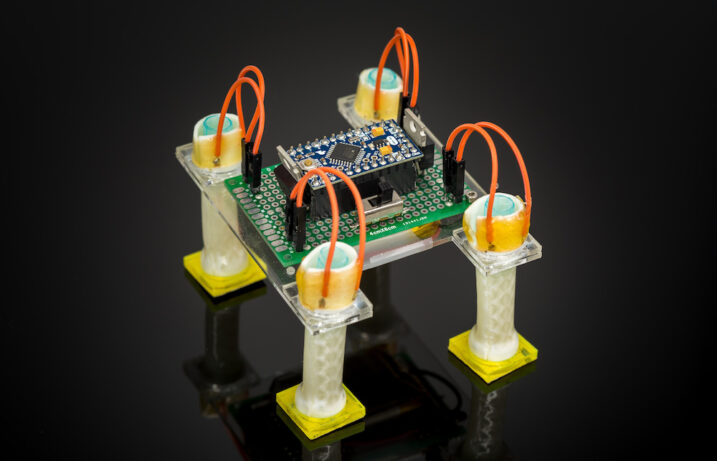Data science is still an emerging field and thus has a high-demand and lucrative job market. But for anyone looking to break into the data science industry, getting started can be daunting.
Some people go back to college, some teach themselves, and some attend data science bootcamps.
Regardless of which path you pick, though, data science involves high coding expertise. And like with many technical fields, skill demand and expectations are always evolving. In this year 2021, here are the best data science programming languages to learn.
First, just a little background into data science.
What is data science?
Data Science is the study of information — and most companies are using data science to help make business decisions, solve complex problems and create strategies to improve results and performance. Data science is also heavily involved in machine learning, deep learning, and artificial intelligence.
Why should you become a data scientist?
Learning data science can lead to a very lucrative career with a vast amount of employment opportunities. The demand for data scientists has greatly increased in recent years, and it will continue to do so, making now the perfect time to begin your journey to becoming a data scientist.
If a high paying job is what you are looking for, then data science is the right path for you. The average data scientist in the USA is making $113k per year, which is far beyond the national average income. It’s also much higher than the average salary for than your typical data analyst.

How do I get started in data science?
Data science does not require a 4-year degree but it is still necessary to become highly educated in the field, especially in big data and math. The best way to do this is by learning one or a couple more programming languages that are used in the field.
So, what coding languages do you need for data science? And what are the best language languages to learn to become a data scientist? We are going to take a deep dive into the many options that you should explore.
What are programming languages?
Programming languages, to put it simply, are the languages used to write lines of code that make up a software program. These lines of code are digital instructions, commands, and other syntaxes that are translated into digital output. There are 5 main types of programming languages:
- Procedural Programming Languages
- Functional Programming Languages
- Object-Oriented Programming Languages
- Scripting Programming Languages
- Logic Programming
Each of these programming language types serves different functions and has specific advantages and disadvantages.
What you need to consider when choosing the best programming language for your data science career path.
The first thing to consider is the goal that you are trying to accomplish. Different tasks will require different levels of knowledge and specific languages may be more suited for the tasks that you are looking to complete.
Next you need to figure out how data science can help you accomplish the task at hand. Data science can automate or streamline many tasks that you may already be handling. This can save you a lot of time, and money.
You also need to figure out how skilled you are in the programming language(s) that you already know, and then decipher if you are ready to take your knowledge and bring it to the next level.
The last thing you will need to discover is at what scale your organization is using data science. This will help you determine what languages to learn as well as how you should learn to use them.

Top programming languages for data science in 2021
While there are a large quantity of useful languages you can learn, these two languages were the top data science programming languages in 2021.
Python was the most popular data science programming language of 2020, and the reasons why are endless. It is easy to use, and easy to learn. Python provides all the necessary tools for the 4 steps of problem solving — data collection & cleaning, data exploration, data modeling and data visualization.
Python also has a number of advanced deep learning libraries which makes it the default language for artificial intelligence. The versatility of Python makes it the key factor in it being the most popular language for data science.
Java is another very popular language among data scientists. It is one of the most tested and proven languages. Java makes application scaling a much easier process which makes it a great choice for building large artificial intelligence and machine learning applications.
Java can be very versatile due to popular languages like scala being a part of the Java Virtual Machine ecosystem. The JVM ecosystem is a great reason for aspiring data scientists to learn Java because it provides an easy entry path to many more useful data science languages.
With all of this being said, there are many languages to consider learning for an aspiring data scientist.
1. Python
As discussed previously, Python has the highest popularity among data scientists. This is due to its wide range of uses. It is often the go-to choice for a range of tasks for domains, such as, machine learning, deep learning, artificial intelligence and other popular forms of technology.
These tasks are made easier due to Python’s powerful data science libraries. Some of the more popular libraries include Keras, Scikit-Learn, matplotlib, and tensorflow.
Python can also support very important tasks, such as data collection, analysis, modeling, and visualisation which are all key factors to work with in big data.
You will never be left without an answer when using Python. This language has a large community for support which is another reason it holds a vital place among the top tools for data science.
Best used for: Python is best used for automation. Automating tasks is extremely valuable in data science and will ultimately save you a lot of time, and provide valuable data.
Pros/Cons: The biggest pro of Python is it’s popularity among data scientists. This wide popularity means that there is endless support and a lot of resources available to continue your education. It’s wide range of open source tools for visualization and machine learning also make Python extremely useful and popular.
There are very few cons to Python, but the biggest complaint among users is it’s speed. Python is relatively slow for computation in comparison to other languages.
Further reading: R vs. Python — Which One Should You Learn?
2. JavaScript
JavaScript is the most popular programming language to learn. It is most commonly used for web development due its capability of building rich and interactive web pages. That being said, it also finds a home in the data science world. JavaScript is an amazing choice for creating visualizations, which is an excellent way to convey big data.
While JavaScript is a great language to learn, it is more of an aid in data science than a primary data science language. We still highly recommend learning JavaScript along with other languages you may learn, due to its popularity and versatility.
Best used for: JavaScript is best used for web development.
Pros/Cons: JavaScript is amazing when it comes to creating visualizations, which can be very helpful when working with big data.
Unfortunately, JavaScript just doesn’t have the range of data science packages, and built in functionality compared to some of the more popular data science languages.
3. Java
Java, which is sometimes referred to as “Write Once, Run anywhere” is a programming language that has been used by top businesses for secure enterprise development and is now being used for tasks involving data analysis, data mining, and machine learning.
It has a powerful ability to build complex applications from scratch, and is capable of delivering results much faster than other languages.
Many people believe that Java is a language for beginners, but that could not be farther from the truth. Java is very powerful and is used for many complicated tasks involving data analysis, deep learning, natural language processing, and data mining.
Java is a little different than most languages due to its true garbage collection. Most languages delete themselves upon execution, and Java’s use of a true garbage collection makes it far more efficient.
Best used for: Java is best used for creating complete applications. It makes building mobile or desktop applications incredibly easy.
Pros/Cons: Java is a very fast language in comparison to its competitors, which helps to build more maintainable and scalable software. It also is easily portable due to it’s “Write once, Run anywhere” function. Java also has a true garbage collection which creates a huge advantage over other languages.
Java is a more disciplined language, so it is not as flexible and friendly as some other languages. In comparison, Python syntax is very concise and easily readable. Java devs are a little more rare, meaning the networking opportunities and support are less easy to come by.
4. R
R is quickly rising the ranks as one of the most popular programming languages for data science, and for good reason. R is a highly extensible and easy to learn language that fosters an environment for statistical computing and graphics.
All of this makes R an ideal choice for data science, big data, and machine learning.
R is a powerful scripting language. This being so, means that R can handle large and complex data sets. This combined with it’s ever growing community makes it a top tier option for an aspiring data scientist.
Best used for: R is best used in the world of data science. It is especially powerful when performing statistical operations.
Pros/Cons: R has numerous pros including being open-source, large amount of support, multiple packages, quality plotting and graphing as well as various machine learning operations.
The biggest downside of using R is security. R lacks basic security and as such it can not be embedded into a web application.
5. C/C++
C is a great programming language to learn data science because it is one of the earliest programming languages, and because of this most newer languages use C/C++ as their codebase.
C/C++ are surprisingly useful for data science, due to their ability to compile data quickly. This allows programmers to have a much broader command of their applications. The low-level nature of C/C++ allows developers to dig deeper and fine tune certain aspects of applications that otherwise wouldn’t be possible.
Best used for: C/C++ is best used for projects with massive scalability and performance requirements.
Pros/Cons: C/C++ is extremely fast and is actually the only language that can compile over a gigabyte of data in less than a second. This is especially useful for big data applications.
While C/C++ is incredibly useful for data science, it is among the more complicated side of programming languages for beginners due to its low-level nature.
6. SQL
SQL is a very important language to learn in order to be a great data scientist. It is so important because a data scientist needs SQL in order to handle structured data. SQL gives you access to data and statistics which makes it a very useful resource for data science.
A database is necessary for data science, thus making using a database language such as SQL a necessity. Anyone dealing with big data will need to have a sound knowledge of SQL in order to query databases.
Best used for: SQl is the standard and most widely used programming languages for relational databases.
Pros/Cons: SQL is a non-procedural language, this means that it does not require the use of traditional programming logic. This makes using SQL much easier because you don’t have to be an expert coder.
SQL has a difficult interface that can make users uncomfortable when using the database. Some versions of SQL can be very costly and due to hidden business rules, complete control of the database is not always given.
7. MATLAB
MATLAB is a very powerful tool for mathematical and statistical computing, that allows implementation of algorithms and user interface creation. UI creation is especially easy with MATLAB due to it’s built in graphics for creating data plots and visualization.
This language is especially useful for learning data science, it is mostly used as a resource to accelerate knowledge of data science. Learning MATLAB is a great way to easily transition into deep learning, due to its functionality of the deep learning toolbox.
Best used for: MATLAB is most commonly used in academia for teaching linear algebra and numerical analysis.
Pros/Cons: MATLAB is an especially useful educational tool with complete platform independence. It has a huge library of predefined functions that provides tested and prepackaged solutions to many primary technical tasks. MATLAB has a tool that allows a programmer to create a graphical user interface for their program, making it easy to create refined data analysis programs.
MATLAB is an interpreted language meaning that it is executed much slower than a compiled language. It is also not free and can be a very expensive program to use in comparison to a traditional compiler.
8. Scala
Scala is a very powerful general purpose language that is very well suited for data science. This is a great language for someone looking to start a data science career.
Scala is ideal when working with high-volume data sets. It is compiled Java bytecode and runs on a Java Virtual Machine. This allows interoperability with Java which opens many opportunities for someone working in data science.
Scala can also be used with Spark to handle large amounts of siloed data. The underlying concurrency support makes Scala a perfect choice for building high-performance Data Science frameworks, such as Hadoop.
Scala also has a vast number of libraries. With over 175,000 libraries there are endless functionalities within the language. It is also supported on various IDE’s such as IntelliJ IDEA, VS Code, Vim, Atom, Sublime Text, and even in your browser.
Best used for: Scala is best used by data scientists that are working with high-volume data sets.
Pros/Cons: Scala is an easy language to pick up, especially if you are already versed in the Java language itself. It is a highly functional language that is scalable and excellent for working with data analytics.
9. Julia
Julia is another language rising in popularity. It is a multi-purpose programming language that is designed for numerical analysis and scientific computing. It’s popularity has risen due to its focus on performance. This has made it a top choice among high-profile businesses focusing on time-series analysis, risk analysis, and space mission planning.
Julia is a very versatile language, as it supports both parallel and distributed computing. While Julia is a dynamically typed language, it has the capability to also be used as a low-level programming language if needed.
Best used for: Julia is best used for data visualization, operations on multi dimensional datasets, and deep learning due to its built-in support for a package manager.
Pros/Cons: Julia is an easy to learn and extremely fast programming language. It is the fastest language for interactive computing available. It’s syntax is inspired by scripting languages like Python, MATLAB, and Ruby. This makes it really easy to quickly learn the basics and become productive quickly.
The Julia community is unfortunately not very large. This makes it much harder to find quick answers to questions and can leave you spending a lot of time problem solving as compared to languages where every problem is solved by a quick google search.
10. SAS
SAS is a tool used primarily for analyzing statistical data. It literally stands for statistical analysis software. The main purpose of SAS is to retrieve, report and analyze statistical data.
SAS probably isn’t going to be the first language you learn, but for beginners having knowledge in SAS can create many more opportunities. It will help you tremendously if you are looking for a job in data management.
Best used for: SAS is best used for business intelligence with tools in its belt like predictive and advanced analytics.
Pros/Cons: SAS has been around for a very long time, and as such, most major companies are using SAS as their official language for analysis. This paired with the fact that it is easy to learn means that there is a huge job market for SAS developers.
There are two major disadvantages of SAS. It is a complete software, means that you cannot use all of its applications without a proper license. SAS also has a lack of graphic representation making it harder to translate data to a visual form.
What coding language to learn if you want to become a data scientist…
Python is the best language to learn if you want to become a data scientist. It is the most widely used language in the field and will present you with the most job opportunities. It is also open source and easy to use. This is the #1 option for anyone looking to start a career as a data scientist.
What coding language to learn if you want to become a data analyst…
SQL is the first language you should learn if you want to become a data analyst. It is the industry standard database language and is hands down the most important skill for a data analyst to possess.
What coding language to learn if you just want to become better with data…
If you don’t have the aspiration to become a data professional but would like to become better with data, Python is the best language for you to learn. It is easy to use and has many useful functionalities that can help in almost any profession. Using Python can help automate many daily tasks that you are putting hours of work into each day.
What is my next step if I want to become a data scientist?
Your next step in your data science career is to receive the necessary education in order to do the job that you desire. There are many free and paid courses to get started, here are the ones that we recommend:
Free courses:
- Code Academy: Code Academy is a fantastic resource for learning almost any programming language. They have a free and paid tier, but the free tier will give you enough entry-level knowledge to decide if paying for a more in-depth course is worth it to you.
- Udacity’s Data Science Fundamentals: This course is completely free and will give you an introduction to the full data science process, and includes lessons in Python, R, and several other open source tools that can help you draw your data science career roadmap.
- Microsoft’s EdX – Data Science Essentials: This course is highly recommended because it will provide you with an introductory knowledge to the fundamentals of data science as well as some training on Python and R. It also comes with a certification upon completion. While the training is free, you will have to pay to receive the certification.
Full-time data science bootcamps:
You should definitely absorb all of the free resources available, but if you truly want to change careers and become a data scientist, you should look into enrolling in a full-time bootcamp. This is the fastest and most efficient way to jump-start your data science career. Here are some options to consider:
Best data science bootcamps:
- Data Science Dojo: Data science dojo is a 16-week bootcamp that can be completed either online or in person. They have multiple training facilities across multiple countries. They cover all facets of data science and have a very high graduation rate.
- Brainstation: Brainstation is an outstanding online bootcamp that offers 10-week certification courses for data analytics and data science.
- Flatiron School: Flatiron school has full-time data science courses dedicated to helping you become a data scientist. Our 15-week data science course will give you the best shot at becoming a full-time data scientist.
If you’d like to try your hand with the basics of data science, Flatiron School offers our Free Data Science Prep Work.
Conclusion
Data science is a very fast growing and in-demand career, and there are many different coding languages involved for different concentrations and disciplines.
At some point in your path to becoming a data scientist you will dabble in each of the languages listed above, but if you’re truly ready to become a data scientist we suggest enrolling in an online bootcamp to get you started.
Further reading:




